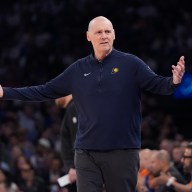For the millions of readers who fell in love with the character Precious in Sapphire’s 1996 book
“Push,” and then the Academy-Award winning film adaptation “Precious: Based on the novel Push by Sapphire,” the author warns her follow-up novel, “The Kid,” is not going to be “your favorite bedtime story with a predicable ending. It’s complex and probing.”
Indeed. Through 376, sometimes heart-wrenching pages, “The Kid” follows Precious’ son Abdul through the death of his mother, then through a myriad of abuse from his foster home to the hands of demented priests of a Catholic boys’ home, then to his great-grandmother’s roach-filled apartment until he finally finds solace in dance. But even that escape isn’t total — in “The Kid,” Abdul is a seriously flawed character, one who heaps abuse on others the way it was done to him.
“Precious isn’t destroyed by her demons, she’s destroyed by poor medical care and indifference,” says Sapphire on the difference between her characters. “Abdul is not destroyed, he is strong enough to fight back. Precious was a total victim. With ‘The Kid,’ we have to look at a person who is flawed himself.”
And despite its bleak tone, Sapphire says “The Kid” isn’t a dark novel — it’s just a tougher one. “It’s just a much harder novel,” she claims. “But it would have been a much harder novel if the first chapter of ‘The Kid’ was the last chapter of ‘Push.’ We needed to have Precious alive [at the end of “Push”]. I feel like a lot of people thought she’d get the right medication and live. But because I’m a writer who adheres to social realism, you know women like Precious don’t have that outcome. So I took the heaviest parts of what is happening with families who are devastated by AIDS and poverty put it on the shoulders of Abdul.”
Luckily, there are bright spots. As Precious found salvation in language, Abdul is able to escape from his life’s lot through art. “One of the things we see with Abdul is his body goes from a connection to pleasure with his mom and his world around him. But when she dies, his body goes to pain,” says Sapphire. “With dance, he’s able to reconnect with his mother and away from the abuse that has robbed him. “He says: ‘When I’m dancing my body is not a stranger.’”
















